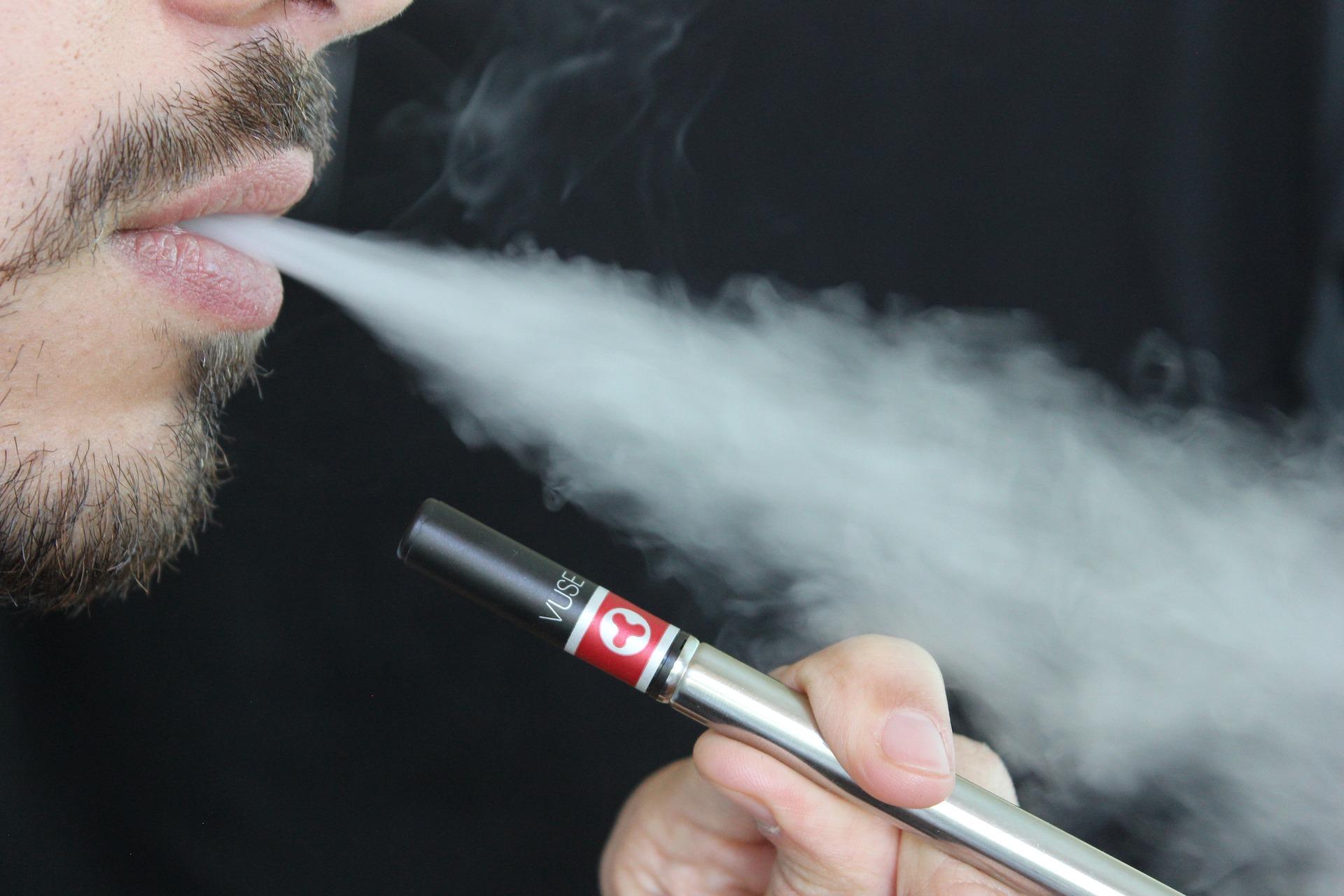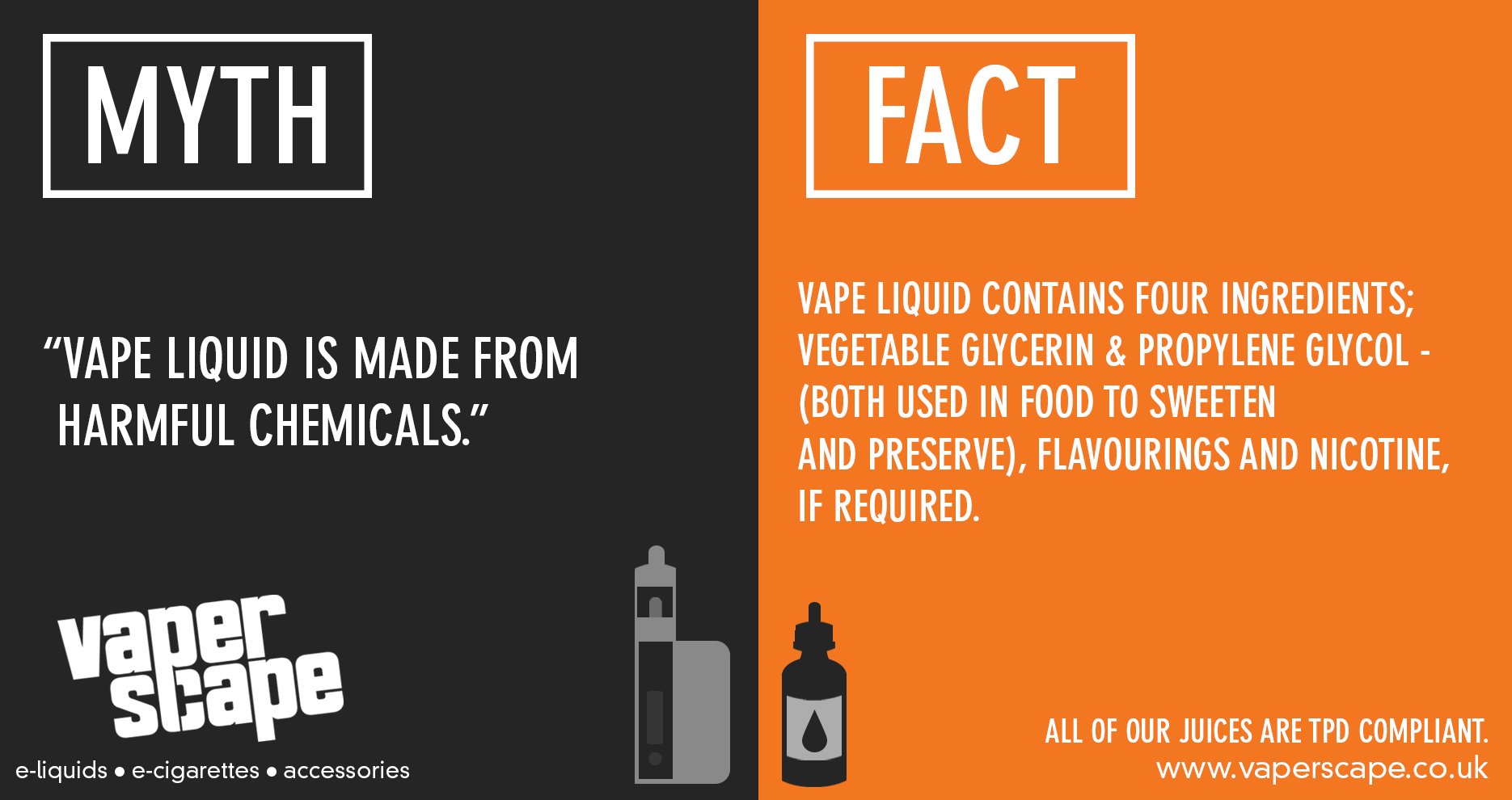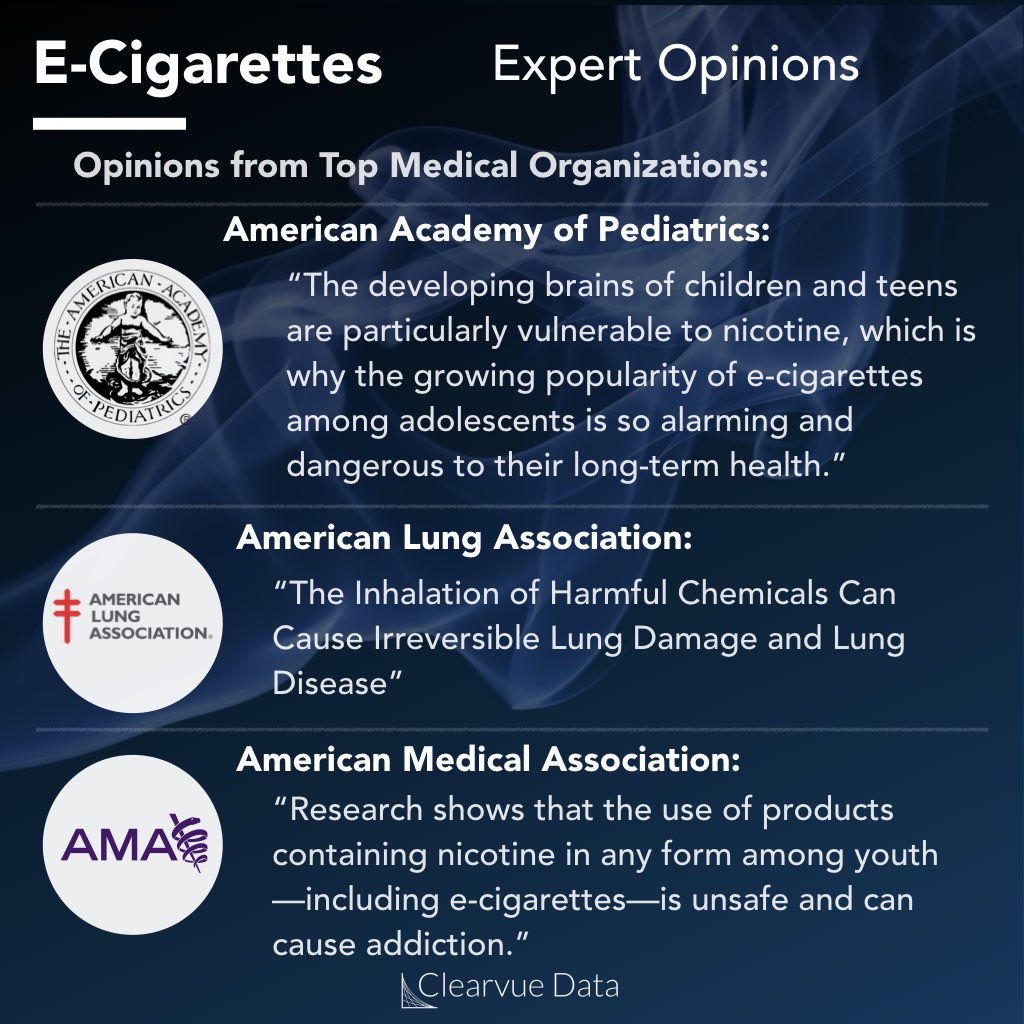
Types of Toxic Chemicals in Vape
- Diacetyl. Diacetyl is a chemical used to give food enhanced flavors. ...
- Volatile Organic Compounds. Volatile organic compounds are created when different chemicals in vape products change and combine.
- Heavy Metals. Particles of various heavy metals have been found in the vapors of many e-cigarettes and vape products.
- Ultrafine Particles. ...
What are the negative health effects of vaping?
The short-term side effects of using nicotine vapes are usually:
- Lingering aftertaste
- Light-headedness
- Sweating
- Headache
- Nausea and vomiting
- High blood pressure
- Increased heart rate
What are the dangers of vaping?
The interchangeable use of smoking and vaping is most common in people under age 35. They face equal risk of heart attack or stroke than if they lit up exclusively. The takeaway is that there is no ‘best’ method of inhaling nicotine.
How is vaping bad for your health?
Vaping and smoking have also been associated with:
- Bad breath
- Bone loss
- Gum disease
- Tooth decay
- Tooth loss
How dangerous is vaping?
Medical Dangers of Vaping
- Chemical Composition of the Liquid Products. The pharmacologically active components of vaping products are not...
- Problems with Manufacturing of E-Cigarettes. There is no real regulation of either nicotine-containing electronic...
- Toxicity of Nicotine and THC. It bears noting that when vaping is successful and delivers concentrated nicotine or...

What chemicals do vaping have?
Besides nicotine, e-cigarettes can contain harmful and potentially harmful ingredients, including:ultrafine particles that can be inhaled deep into the lungs.flavorants such as diacetyl, a chemical linked to serious lung disease.volatile organic compounds.heavy metals, such as nickel, tin, and lead.
How many toxic chemicals are in Vapes?
Vaping exposes users to around 2,000 chemicals, including potentially harmful industrial compounds, according to a study of four popular brands by researchers at Johns Hopkins University.
Does vape juice have harmful chemicals?
Chemicals in Vape. In recent years, scientists have found various chemicals and substances in vape products that may be dangerous to human health. These include flavoring chemicals like diacetyl, heavy metal particles, compounds like formaldehyde, and ultrafine particles.
What are 5 ingredients in Vapes?
This in turn led to a discussion about how there are only five "ingredients" in vape juice -- water, vegetable glycerin, propylene glycol, flavoring (which can be many things), and nicotine.
What's worse smoking or vaping?
1: Vaping is less harmful than smoking, but it's still not safe. E-cigarettes heat nicotine (extracted from tobacco), flavorings and other chemicals to create an aerosol that you inhale. Regular tobacco cigarettes contain 7,000 chemicals, many of which are toxic.
What are 5 dangers of vaping?
5 Dangers of VapingUnknown Chemicals.Illicit Substance Additives.Vaping Impacts Brain Development.Long-Term Lung Damage.Marketing and Media Influence.
What is the healthiest vape?
The PAX 3 is consistently ranked one of the healthiest vapes, and it's an incredibly customizable conduction vaporizer suitable for dry herb and wax. Heated through thermal conduction, the PAX 3 doesn't sear your material.
What is the safest vape to use?
If you are looking for the safest vape kit then you might want to consider disposables or pod kits. These are often low powered and have safety cuts offs as well as other features to prevent them from overheating. Not only as disposables one of the safest vape kits, but they are also super easy to use.
What does vaping do to your lungs?
But what is clear is that e-cigarettes have been found to have chemicals and particles that have been linked experimentally to lung disease, including asthma and chronic obstructive pulmonary disease (COPD). Vaping can also cause lung inflammation, which has been linked to chronic lung disease as well.
Is it OK to inhale propylene glycol?
No health authority has labelled propylene glycol safe for inhalation. Manufacturers and chemical safety agencies recommend that inhalation be avoided, as shown in the Table 1. Reports of acute illnesses and deaths have increased interest in the health risks of inhaling propylene glycol and vegetable glycerin.
What are 10 risks of vaping?
Serious & Potentially Long-Term Effects of VapingNicotine addiction.Severe lung injury.Seizures.Cryptogenic organizing pneumonia (COP), formerly known as idiopathic bronchiolitis obliterans with organizing pneumonia (BOOP)Popcorn lung.Strokes.Heart attacks.
How safe is vaping?
Vaping is not completely risk-free, but it poses a small fraction of the risk of smoking cigarettes. The long-term risks of vaping are not yet clear. E-cigarettes do not produce tar or carbon monoxide, two of the most harmful elements in tobacco smoke.
What are 10 risks of vaping?
Serious & Potentially Long-Term Effects of VapingNicotine addiction.Severe lung injury.Seizures.Cryptogenic organizing pneumonia (COP), formerly known as idiopathic bronchiolitis obliterans with organizing pneumonia (BOOP)Popcorn lung.Strokes.Heart attacks.
What is the safest vape to use?
If you are looking for the safest vape kit then you might want to consider disposables or pod kits. These are often low powered and have safety cuts offs as well as other features to prevent them from overheating. Not only as disposables one of the safest vape kits, but they are also super easy to use.
How many ingredients are in a vape?
fourE-Liquid is made up of four basic ingredients; water, nicotine, flavorings, and a propylene glycol or vegetable glycerin base (or sometimes a mixture of PG and VG). Nicotine – The addictive ingredient found in e-cigarettes and traditional cigarettes.
How many toxic chemicals are in cigarettes?
Of the more than 7,000 chemicals in tobacco smoke, at least 250 are known to be harmful, including hydrogen cyanide, carbon monoxide, and ammonia (1, 2, 5). Among the 250 known harmful chemicals in tobacco smoke, at least 69 can cause cancer.
What are the main components of an e-cigarette?
The main components. E-cigarette liquids, at the bare minimum, have three main components: flavors, sweeteners and solvents. Solvents are substances used to dissolve either nicotine or marijuana-derived compounds including THC or CBD so those ingredients can be inhaled.
How do e-cigarettes produce aerosols?
E-cigarettes produce an aerosol by heating the e-liquid with metal coils. Those metal coils can be composed of a variety of substances, including an alloy of iron, chromium and aluminum called kanthal, or a combination of nickel and chromium.
What are the ingredients in e-liquid?
Sweeteners include sucralose and ethyl maltol. E-liquid flavors are wide-ranging, and can read like a wine tasting: "notes of vanilla" or "berries and herbal notes.". All of those ingredients — the solvents, the sweeteners and the flavors — are considered "generally recognized as safe" by the Food and Drug Administration.
What is the condition that a woman developed after vaping?
And a 2012 case report involved a woman who developed a condition called exogenous lipoid pneumonia after vaping for about six months. Doctors said her e-cigarette's oil-based solvents were the likely cause, and her condition improved when she quit vaping.
What are the elements that make up an aerosol?
Those metal coils can be composed of a variety of substances, including an alloy of iron, chromium and aluminum called kanthal, or a combination of nickel and chromium.
What is the chemical in vanilla bean?
One recent study from Yale University found that vanillin — an extract of the vanilla bean — transforms into chemicals called acetals when aerosolized. Those chemicals, the researchers said, may be especially irritating to the lungs and cause damage when inhaled.
Does propylene glycol cause asthma?
Studies have shown that breathing in aerosolized propylene glycol may contribute to asthma.
What is a toxic metal found in cigarettes?
Cadmium – a toxic metal found in traditional cigarettes that causes breathing problems and disease
What is the chemical used to kill weeds?
Diacetyl – a chemical linked to a lung disease called bronchiolitis obliterans aka " popcorn lung ". Diethylene glycol – a toxic chemical used in antifreeze that is linked to lung disease.
What are the effects of e-cigarettes?
Because the Food and Drug Administration (FDA) has not begun its review of any e-cigarette or its ingredients, nor has FDA issued any standards on the products, e-cigarette composition and effects vary. What researchers do know is that these toxic chemicals and metals have all been found in e-cigarettes: 1 Nicotine – a highly addictive substance that negatively affects adolescent brain development 2 Propylene glycol – a common additive in food; also used to make things like antifreeze, paint solvent, and artificial smoke in fog machines 3 Carcinogens- chemicals known to cause cancer, including acetaldehyde and formaldehyde 4 Acrolein – a herbicide primarily used to kill weeds, can cause irreversible lung damage 5 Diacetyl – a chemical linked to a lung disease called bronchiolitis obliterans aka " popcorn lung " 6 Diethylene glycol – a toxic chemical used in antifreeze that is linked to lung disease 7 Heavy metals such as nickel, tin, lead 8 Cadmium – a toxic metal found in traditional cigarettes that causes breathing problems and disease 9 Benzene – a volatile organic compound (VOC) found in car exhaust 10 Ultrafine particles that can be inhaled deep into the lungs
What are the chemicals that affect the brain?
Carcinogens- chemicals known to cause cancer, including acetaldehyde and formaldehyde.
What happens when e-liquid heats up?
Additionally, when the e-liquid heats up, more toxic chemicals are formed. Because the Food and Drug Administration (FDA) has not begun its review of any e-cigarette or its ingredients, nor has FDA issued any standards on the products, e-cigarette composition and effects vary. What researchers do know is that these toxic chemicals ...
Does e-juice contain nicotine?
The "e-juice" that fills the cartridges usually contains nicotine (which is extracted from tobacco), propylene glycol, flavorings and other chemicals. Studies have found that even e-cigarettes claiming to be nicotine-free contain trace amounts of nicotine.
What happens if you vape with chemicals?
Chemicals in vaping flavors cause widespread damage to lung tissue
What are the flavors of e-cigarette pods?
E-cigarette flavored pods are growing in use among the nation’s young adults and come in a variety of flavors, such as cucumber, mango, and mint. Employing mass spectrometry, the researchers identified almost 40 different chemicals present in various combinations in seven flavors produced by a major vaping product manufacturer. These include hydrocarbons and volatile organic compounds, many of which have industrial uses and are known to be harmful if inhaled.
Can flavored e-liquid cause cancer?
Chemicals that comprise flavored e-liquids and pods may cause harmful effects to lung tissue, including inflammation and genetic damage that could indicate long-term risk for respiratory disease and even cancer, according to a new research study.
Does vaping damage your lung?
Chemicals in Vaping Flavors can Damage Your Lung Tissue
How many chemicals were found in e-cigarettes?
The team found nearly 2,000 chemicals, the vast majority of which are unidentified. Of those the team could identify, six substances were potentially harmful, including three chemicals never previously found in e-cigarettes. Tehrani was particularly surprised to find the stimulant caffeine in two of the four products. Caffeine has previously been detected in e-cigarettes but only in the caffeine-oriented flavors like coffee and chocolate.
What is the method used to test vapes?
Prasse and his team were the first researchers to test vape samples with chromatography/high-resolution mass spectrometry, a chemical fingerprinting technique more commonly used to identify organic compounds in wastewater, food, and blood. Although it's possible to buy vaping products in hundreds of flavors, for consistency they tested only tobacco-flavored liquids sold by four popular brands—Mi-Salt, Vuse, Juul, and Blu. They found thousands of unknown chemicals in the liquid, and the number of compounds increased significantly in the aerosol. Furthermore, they detected condensed hydrocarbon-like compounds, typically associated with combustion, which manufacturers say is not happening during vaping. In traditional cigarettes, the condensed hydrocarbons generated during combustion are toxic.
What is vaping fingerprinting?
The study is the first to apply to vaping liquids and aerosols an advanced fingerprinting technique used to identify chemicals in food and wastewater. The results, just published in the journal Chemical Research in Toxicology , suggest people who vape are using a product whose risks have yet to be fully determined and could be exposing themselves to chemicals with adverse health effects.
How many vape deaths have been reported?
As of September 24, 805 possible vape-related respiratory illness cases have been reported from 46 states, the Centers for Disease Control and Prevention and the Food and Drug Administration said in a statement. Twelve have resulted in death.
What is the purpose of propylene glycol?
Propylene glycol is a suspension ingredient that helps turn nicotine into an aerosolized form users inhale.
How long does it take for propylene glycol to break down?
Research has shown propylene glycol can enter a person's bloodstream if they inhale it, but it breaks down after 48 hours. If a person is consistently exposed to the chemical, however, it could lead to skin or lung irritation, depending on where the chemical interacts with the body.
Why do clothes have colorless gas?
The colorless gas is also used to keeps clothes wrinkle-free in their packaging, although in undetectable amounts that can be scrubbed off with soap and water, Insider previously reported. Inhaling formaldehyde has also been linked to asthma and nausea, and wearing clothes with the chemical is associated with ashes, blisters, and itchy, dry skin.
Can vaping cause lung damage?
Read more: Mysterious vaping illnesses are causing life-threatening lung injuries and death. Here's what we know about the people who have been affected so far.
Can nicotine be used in vapes?
The ingredients in nicotine-containing vapes vary based on the flavor and brand, which has made tracking down an exact culprit for vape-related illnesses a difficult task for the FDA and CDC.
Is vaping better than smoking?
"Just be aware that from the lungs' perspective, vaping doesn't seem to be better than smoking," Professor Robert Tarran, who studies vaping at the University of North Carolina Marisco Lung Institute, previously told Insider.
What are the chemicals in vapor?
While the chemicals are heated inside vapor, toxic chemicals such as acrolein and formaldehyde are released. Moreover, the FDA had warned, in 2009, that vapor contains diethylene glycol. It is a chemical ingredient which is used in antifreeze.
What is the chemical compound in e-cigarettes?
Recent study conducted by researchers at the Lawrence Berkeley National Laboratory found that propylene glycol (eyes and respiratory irritant) and vegetable glycerin (skin, eye and respiratory irritant) were found in e-cigarette. Propylene glycol (PG) is an organic chemical compound which has been proved by FDA. Commonly, it is used to create artificial smoke in theatre, also skin and other personal care products and also vapor.
What is vapor inhaler?
Vapor or also known as E-cigaretter is a device which is deisgned to imitate how regular cigarette works or simply can be called as nicotine inhaler. It delivers nicotine without combusting tobacco or other toxicants. It becomes a hit for the people around the world. Its fancy usage and also taste capture many people.
How much acrolein is in a cigarette?
For your information, the amount of released acrolein is much less than regular cigarette with tobacco, it normally delivers 400 to 500 micrograms of acrolein. Acrolein itself is a chemical ingredient which used as a severe eye and respiratory irritant.
How many nicotine inhalers are there in an e-cigarette?
(a typical nicotine inhaler user will go for about 16 nicotine inhaler)
Why do vapor companies use VG and PG?
Some vapor companies combine VG and PG to create more enjoyable experience to inhale vapor. However, According to Federal Health Officials, those two chemicals are known as the trigger cause of cancer. The two chemicals and other chemicals are used in vapor to create artificial smoke.
What is the formula for formaldehyde?
Formaldehyde is with the chemical compound formula as H-CHO (CH 2 O). The formaldehyde in vapor is produced from PG (propylene glycol) and VP (vegetable glycerin) thermally degrading, and PG as the main culprid. Another study found that formaldehyde also comes from flavouring.
